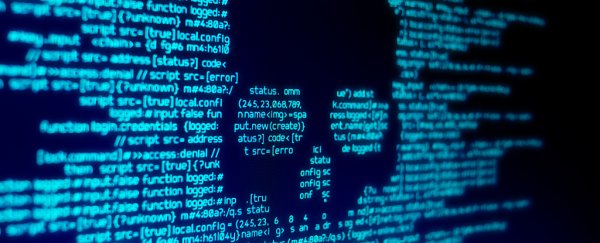You wouldn't ordinarily want to seek out a computer with viruses installed, but that's exactly what the winner of a US$1.345 million auction just did – picking up a laptop crammed with the deadliest malware of our time in return for their cash.
The buyer remains anonymous but we know much more about the laptop, which is actually part of an art project by Chinese digital artist Guo O Dong. The piece is called The Persistence of Chaos.
Dong worked with cybersecurity firm Deep Instinct to load up the laptop with its dangerous code, and it's apparently air gapped, which means it has security measures that prevent it from connecting to any other networks, to stop it from spreading its malware further.
 The laptop has been part of an art installation livestreamed on the web. (Guo O Dong)
The laptop has been part of an art installation livestreamed on the web. (Guo O Dong)
"These pieces of software seem so abstract, almost fake with their funny, spooky names, but I think they emphasise that the web and IRL [in real life] are not different spaces," Guo told Rob Dozier at Motherboard.
"Malware is one of the most tangible ways that the internet can jump out of your monitor and bite you."
So what are the viruses that the winning bidder thought were so valuable? You might remember some of them – though we hope you avoided actually becoming a victim.
The oldest pieces of malware here are email worms - messages with dangerous attachments. When run, these attachments can cause damage to local files, open up a computer to hackers, and of course forward themselves on to other unsuspecting users.
Persistence of Chaos includes ILOVEYOU from 2000, a particularly damaging worm that came attached to an email with an "ILOVEYOU" subject header. It deleted local files when run, and is thought to have caused billions of US dollars' worth of damage before being stopped.
Sobig, from 2003, was even bigger than ILOVEYOU – it became the world's most rapidly spreading virus for a while, and would open backdoors to computers that could potentially be used by hackers.
Then there's Mydoom, from 2004, which eclipsed both ILOVEYOU and Sobig. It remains the fastest-spreading email worm ever, and was intended to make computers vulnerable to remote access and to target specific servers online.
The next bit of malware loaded on to The Persistence of Chaos is BlackEnergy from 2007, not an email worm but a cyberattack tool that can bring down computers, servers and other infrastructure remotely.
Then there's DarkTequila, which has been active since 2013, mainly in Latin American countries. Its main purpose is to steal financial information and personal login details from unsuspecting users.
Finally, WannaCry, the notorious ransomware package that first appeared in 2017, is also on the laptop. Like other pieces of ransomware, WannaCry demands payment from users to avoid having their files wiped.
Quite a rogue's gallery of viruses, all loaded up on a 10.2-inch Samsung laptop running Windows XP, and now worth more than a million dollars.
For the time being at least, the laptop can still be viewed online via a livestream. Ultimately, its maker wants it to act as a testament to the dangers of the web… and the monsters it can produce.
Unfortunately, there's no sign of our computers and networks getting much safer anytime soon – Guo may well be able to update his art installation with a new set of threats in a few years' time.
If you want to know how to minimise the chances of you getting hit, we've got some advice for you.
"We have this fantasy that things that happen in computers can't actually affect us, but this is absurd," Guo told James Vincent at The Verge. "Weaponised viruses that affect power grids or public infrastructure can cause direct harm."
